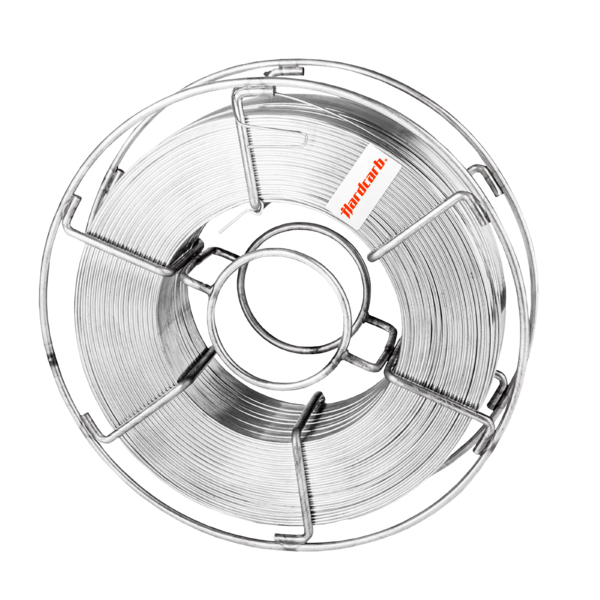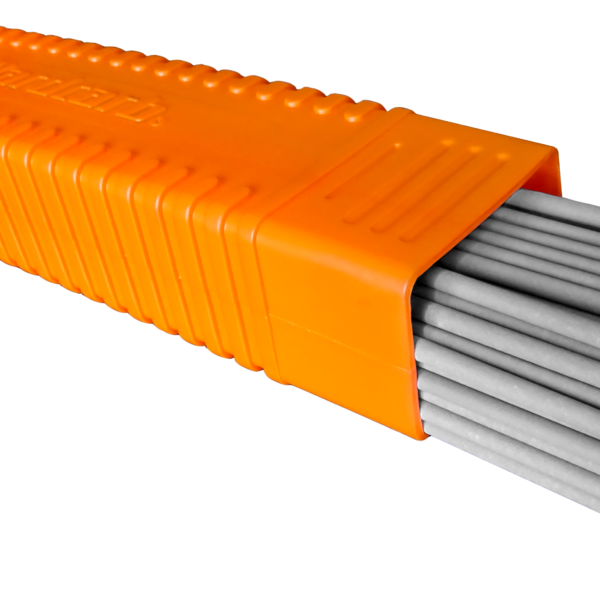Hardcarb BU50


A high performance austenitic manganese steel alloy fortified with Ni and Cr. Perfectly suited for tough and crack-resistant joining and surfacing on parts of high manganese (12-14%) steels subject to extreme impact, compression and shock. Buildups on carbon steel are also possible. The fairly soft ductile weld metal rapidly work hardens under heavy impact and battering to become wear and abrasion resistant. Frequently used as cushion layer before hardfacing in case of heavy reclaiming.
Weld deposit characteristics:
As-deposited weld microstructure consists of a soft manganese alloy austenite which rapidly work hardens under impact loading. It is non-magnetic and exceptionally resistant to wear caused due to heavy impact and high pressure. The Ni, Cr fortification increases the resistance against cracking, corrosion, abrasion and cavitation.
The deposit is excellent for unlimited build-up layers on “Hadfield” manganese steel and also on carbon steel prior to chromium carbide
hardfacing deposit
Recommended uses and applications
Surfacing and building up manganese steel components used in:
» railway applications (rails, switches, crossings, tongues)
» quarries and mines (crusher jaws, excavator and grab teeth, mill hammers, blowbars, gyratory crusher, dredge cutters)
Other common uses:
» for dissimilar joints between Mn and construction steels
» as buffer layers prior to hardfacing
Additional info
Anti-wear suitability
| Metal-to-Metal friction Metal surfaces in relative motion forced into contact with or without lubricant. Degradation by the formation of micro-welds between the contacting surfaces. | Highly suitable |
| High pressure abrasion Wear by relative movement under pressure of mineral particles of suitable hardness, shape and texture to remove material from the metal surface, leaving superficial deformation. | - |
| Cavitation Tearing out of grains from the metal surface by the formation and implosion of bubbles in a liquid in rapid motion. | Suitable |
| Mechanical fatigue Fatigue and formation of cracks in surface regions due to tribological stress cycles that result in the separation of material. | Suitable |
| Thermal fatigue Cyclic exposure to high temperatures leading to permanent deformation by alternate expansion and contraction. Alteration of the structure and properties of the material. | - |
| Hot oxidation Creation of a poorly adhering oxide layer that reforms constantly. Degradation by loss of material thickness. | - |
Workability
| Work hardening Work hardening is the process of making a metal harder and stronger through plastic deformation. When a metal is plastically deformed, dislocations move and additional dislocations are generated. | |
| Edge retention Suitability for creating sharp edges and retaining them during operation. | |
| Machining Machinability is the ease with which a metal can be cut (machined) permitting the removal of the material with a satisfactory finish at low cost. | Suitable using carbide tools. |